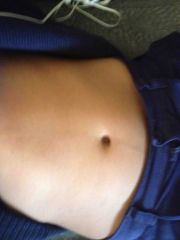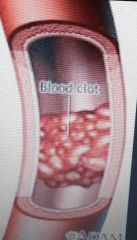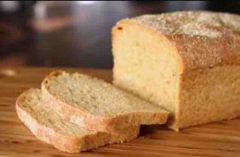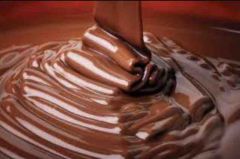![]()
![]()
![]()
Use LEFT and RIGHT arrow keys to navigate between flashcards;
Use UP and DOWN arrow keys to flip the card;
H to show hint;
A reads text to speech;
22 Cards in this Set
- Front
- Back
- 3rd side (hint)
|
What is the scientific name for guts? |
Alimentary canal. |
From your windpipe to your anus. |
|
|
What is pepsin? |
The enzyme that breaks down proteins to peptides. Found in the stomach where it is very acidic. |

Stomach |
|
|
What role does the large intestine have in digestion? |
The large intestine absorbs water |
|
|
|
Trypsin breaks down ..... to ...... |
Peptides......Amino acids |
|
|

How are these formed and name two places where they can form. |
Saturated fats found in animal products like butter can lead to a blood clot. The fat is deposited on the walls of the artery and builds up until no blood can pass. This may lead to a heart attack if caught in the heart artery or a stroke if caught in the brain artery. |
Related to fats |
|
|
Name the 5 classes of food and their uses, some foods and what will happen if is not eaten? |
Carbohydrates-energy-bread-stunted growth Proteins-growth, repair tissue-eggs-kwashiorkor Fat-insulates body, stores energy-cheese-obesity Vitamins and minerals-healthy-fruits-scurvy |
|
|
|
What is the test for starch? What color should the solution be if it contains starch? |
Add few drops of iodine to some starch solution. If there is starch the color of the solution should be black |

|
|
|
What is the test for glucose? What color will the solution be if it contains glucose? |
Add a few drops of Benedict's to some sugar solution and put the test tube in a beaker of boiling water. If there is glucose the solution should be orange. |

|
|
|
What is the test for protein? What color will the solution be if there is glucose in it? |
Add a few drops of biuret solution which is sodium hydroxide and copper sulphate solution to some protein solution. If there is protein then the solution should be purple |

|
|
|
Why do males beed more energy than females? |
Because males are usually more muscular and bigger than females. |
|
|
|
A pregnant woman needs more energy. Why? |
She needs nutrients and energy for 2 people and since her baby is using her energy she needs to have double the energy. |
|
|
|
Who needs more energy a male office worker or a female manual worker? Explain. |
The female manual worker will need more energy since she does more physical movement than the male office worker who re mostly on computers. |
|
|
|
What is water needed for? |
Water is needed to keep you hydrated and so food can be dissolved |
|
|
|
What is the test for glucose? What color will the solution be if it contains glucose? |
Add a few drops of Benedict's to some sugar solution and put the test tube in a beaker of boiling water. If there is glucose the solution should be orange. |
|
|
|
What is the test for protein? What color will the solution be if there is glucose in it? |
Add a few drops of biuret solution which is sodium hydroxide and copper sulphate solution to some protein solution. If there is protein then the solution should be purple |
|
|
|
What is the test for fat? What color will the solution be if it contains fat? |
Add ethanol to the fat solution and shake then add water to the solution and shake again. If there is fat in the solution it should turn milky white |
|
|
|
What is unsaturated fat? |
Unsaturated fat is found in plants. Olive oil is an unsaturated fat. They are not so harmful. |
|
|
|
What is saturated fats? |
Saturated fats are found in animals. Cheese is a saturated fat. Too much saturated fat is not healthy. They get stored in the walls of our arteries and may cause a stroke or hea |
|
|
|
Why do we need vitamin A, C and D, iron, calcium, roughage/fibre and what will happen if these are not eaten? |
Vitamin A-helps vision-night blindness Vitamin C-improves immunity-scurvy Vitamin D-strengthens bones and teeth-rickets Iron-makes rbc which carry oxygen-anaemia Calcium-strengthens teeth and bones-weak teeth and bones Roughage-helps food move along the gut-constipation |
|
|
|
Describe enzymes. What do they do? Where they are? How many are needed? Their environment. How are they destroyed? When are they at their best? |
Enzymes help break down food and are in different places. Some in the stomach, mouth and small intestine. We only need a small amount since they are reusable. Some enzymes can survive or at their best at high pH levels like pepsin. High temperatures kill enzymes and they are best at 40 degrees Celsius. |
|
|
|
Name 4 enzymes and what they help break and also what they break into. |
Amylase-starch, maltose- glucose Pepsin-protein-peptides Lipase-fat-fatty acids and glycerol Trypsin-peptides-amino acids |
|
|
|
What is gastric juices and bile? Where are they found? |
Gastric juices are found in the stomach and contain pepsin. Bile is essential for the digestion of fat. It is produced by the liver and stored in the gall bladder. |
|

